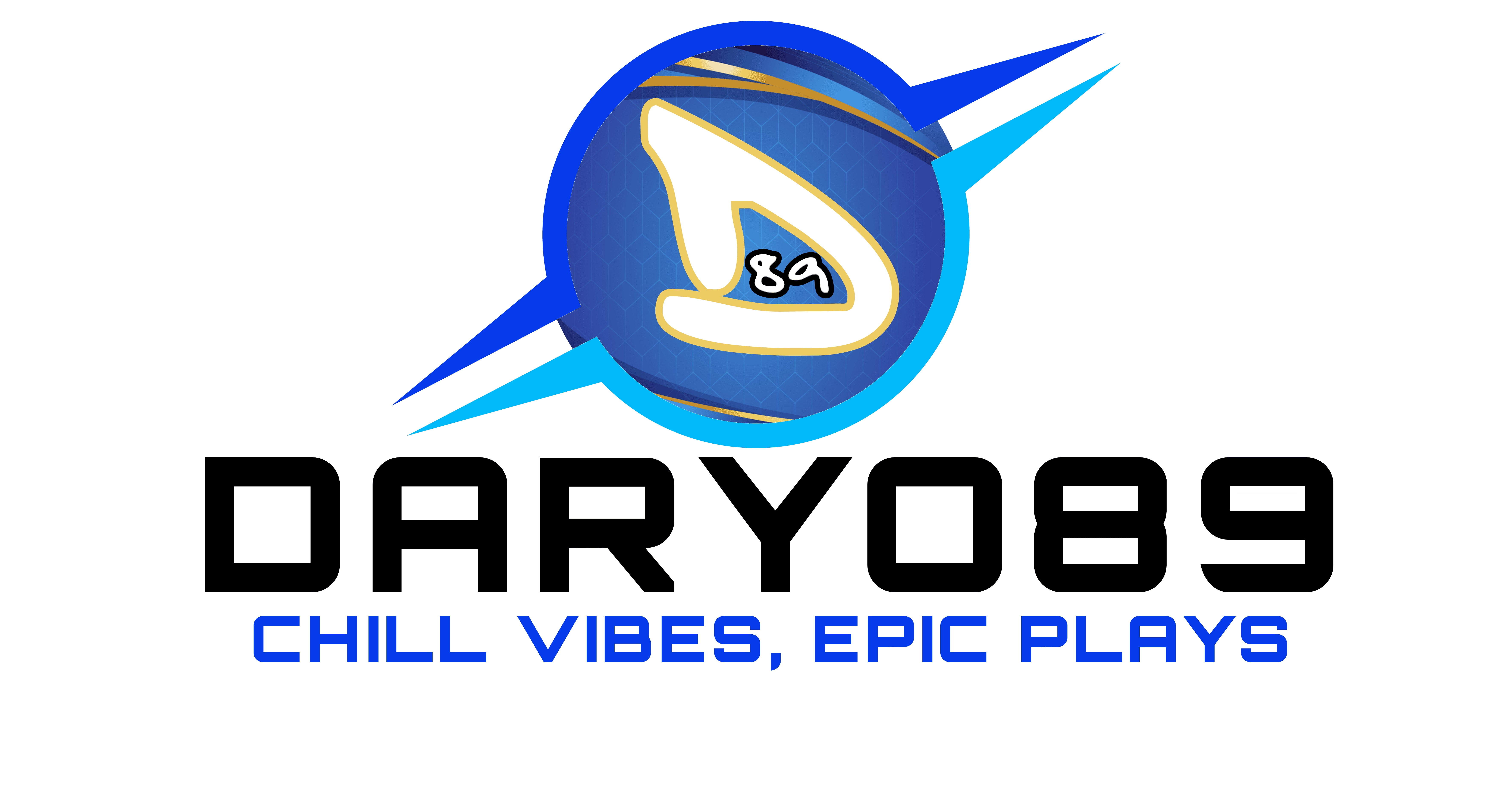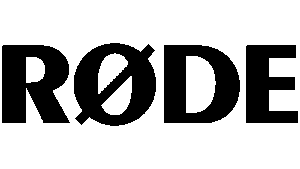Streaming Platform Showdown 2025: A Comparative Analysis of Kick, Twitch, and YouTube Live for Content Creators
I. Executive Summary
The live streaming landscape in April 2025 remains a fiercely competitive arena dominated by established giants and disruptive newcomers. This report provides a comparative analysis of three key platforms – Kick, Twitch, and YouTube Live – evaluating their suitability for streamers based on current monetization structures, platform features, content regulations, audience characteristics, and discoverability mechanisms. The analysis reveals distinct strategic positioning: Kick leverages highly favorable, streamer-centric revenue splits (notably a 95/5 subscription share) and more permissive content guidelines, attracting creators prioritizing immediate income and content freedom, particularly in niches like gambling. Twitch maintains its stronghold through deeply integrated community features and a large, historically gaming-focused user base, though its monetization models are more complex and content rules, particularly concerning DMCA, present ongoing challenges. YouTube Live benefits immensely from its integration into the broader YouTube ecosystem, offering unparalleled reach via search and VOD synergy, favorable splits on direct contributions (70/30), and a more structured copyright system (Content ID), appealing to creators focused on long-term brand building and diverse content formats. However, its ad revenue split (55/45) is less generous, and Partner Program entry requires higher thresholds. Platform choice in 2025 is not about finding a single “best” option, but about strategically aligning a streamer’s specific goals—be it revenue, community, content style, or growth trajectory—with the unique strengths, weaknesses, and inherent risks of each platform. The rapid evolution observed mirrors trends in other tech sectors where performance leaps often entail trade-offs and adoption cycles lag behind potential.
II. Introduction
The digital content creation sphere, particularly live streaming, continues its rapid evolution into Q2 2025. Platforms vie aggressively for both creator talent and viewer attention, leading to constant shifts in features, policies, and economic models. This environment presents both opportunities and challenges for streamers seeking to establish or grow their presence. Three platforms stand at the forefront of this competitive dynamic: Twitch, the long-standing incumbent primarily rooted in gaming; YouTube Live, leveraging the scale and infrastructure of the world’s largest video platform; and Kick, a relatively newer entrant challenging the status quo with disruptive monetization and content policies.
The purpose of this report is to deliver a comprehensive, data-driven comparative analysis of Kick, Twitch, and YouTube Live, current as of April 2025. It aims to equip aspiring and established streamers, along with their management and advisors, with the critical information needed to make informed, strategic decisions about platform selection. Choosing the right platform—or combination of platforms—is crucial for aligning a creator’s content style, target audience, monetization goals, and growth strategy with the environment most conducive to their success. Much like evaluating hardware upgrades where theoretical potential must be weighed against real-world application and system compatibility , selecting a streaming platform requires a nuanced understanding of its specific offerings and limitations.
This analysis delves into the core aspects influencing streamer success on each platform. It examines the intricacies of their respective monetization frameworks, including revenue splits, payout thresholds, and the diversity of income streams. It assesses key platform features, community interaction tools, and the mechanisms governing stream discoverability. Furthermore, it scrutinizes content moderation policies, community guidelines, copyright management approaches, and the general reputation and culture associated with each service. Finally, it profiles the estimated audience size, demographics, and prevailing content preferences on Kick, Twitch, and YouTube Live. By comparing these elements directly, this report provides actionable guidance to help streamers navigate the complex platform landscape of 2025. The need for such strategic evaluation is underscored by the broader technological context, where advancements often present complex trade-offs between performance, cost, and practicality.
III. Platform Deep Dive: Kick (April 2025 Status)
Kick emerged as a significant disruptor, primarily differentiating itself through highly favorable financial terms for creators and a more relaxed approach to content moderation compared to its main competitors. As of April 2025, it continues to carve out its niche, attracting a specific segment of the streaming community.
A. Monetization Framework
Kick’s monetization structure is designed to be straightforward and exceptionally appealing to creators focused on direct earnings from their audience.
- Subscriptions: The platform’s most notable feature remains its 95/5 subscription revenue split, where the streamer retains 95% of the subscription fee, with Kick taking 5%. This significantly surpasses the standard splits offered by Twitch (typically 50/50 for Affiliates/most Partners) and YouTube (70/30 on Memberships after platform fees and taxes). This aggressive split serves as a powerful recruitment tool. As of April 2025, this 95/5 split remains the standard offering, with no complex tiering structures reported.
- Donations/Tipping (“Kicks”): Kick facilitates direct tipping through its native currency, “Kicks,” or similar mechanisms. Reports indicate that streamers retain 100% of the value of these direct tips, offering another highly favorable income stream compared to platforms like Twitch where the platform takes a share of Bits revenue.
- Advertising Revenue: Kick’s advertising model is still considered less developed compared to Twitch and YouTube. While ads exist, the infrastructure, advertiser pool, and revenue potential appear less mature. Information suggests streamers have some control over ad frequency, but the specific revenue share offered to streamers from programmatic ads run by Kick is often cited as being less transparent or potentially lower than the direct support splits would suggest. The platform seems to prioritize direct creator support (subs, tips) over indirect ad revenue for streamer income.
- Eligibility Requirements: Kick maintains relatively low barriers to monetization compared to the YouTube Partner Program or Twitch Partner status. Requirements typically involve a modest number of followers (e.g., 75) and a small number of hours streamed (e.g., 5 hours), making it accessible for new streamers to start earning quickly.
The platform’s financial model, while attractive upfront, relies heavily on its ability to sustain operations on a small percentage of subscription revenue and potentially other income sources (like sponsorships or ties to its parent/affiliated companies, e.g., Stake.com). This structure, analogous to hardware manufacturers pushing performance boundaries potentially at the cost of efficiency or thermal stability , presents both high reward and potential long-term risk regarding platform sustainability or future changes to the splits.
B. Platform Features & Streamer Tools
Kick offers a functional core feature set for live streaming but generally lags behind Twitch and YouTube in terms of advanced tools and polish.
- Core Features: Standard features include live chat with moderation tools, basic emote support (though less extensive than Twitch’s ecosystem), integration with common streaming software (like OBS, Streamlabs), and a creator dashboard providing essential analytics (viewer counts, sub numbers, earnings).
- Discoverability: Discoverability primarily relies on browsing categories (Games, IRL, Music, Gambling, etc.), a recommendation algorithm that is still evolving, and streamer-defined tags. Compared to YouTube’s powerful search integration or Twitch’s established category browsing and raid culture, finding entirely new, smaller streamers organically on Kick can be more challenging. The platform has benefited significantly from attracting established streamers who bring their existing audiences.
- Unique Tools: Kick has experimented with features aimed at transparency or specific niches. However, as of April 2025, it lacks a standout, widely adopted unique feature comparable to Twitch’s Channel Points or YouTube’s seamless VOD integration. Its primary unique selling proposition remains its monetization and content policies rather than specific technological tools. The platform’s development trajectory seems focused on catching up on core functionalities while maintaining its key differentiators.
C. Content Moderation & Community Guidelines
Kick has cultivated a reputation for more lenient content moderation compared to Twitch and YouTube, which is both a draw and a point of criticism.
- Policies: Kick’s community guidelines officially prohibit illegal activities, hate speech, targeted harassment, and non-consensual sexual content. However, its rules regarding content like gambling streams, certain types of potentially suggestive content (within limits), and copyrighted material usage appear less stringently enforced or interpreted more loosely than on competitor platforms. Gambling content, in particular, is prominent and explicitly allowed, stemming from its ties to Stake.com.
- Enforcement Reputation: The platform is widely perceived as being significantly more lenient, particularly regarding suspensions for borderline content or copyright issues that might trigger immediate action on Twitch or YouTube. This leniency attracts creators chafing under stricter regimes but also fuels criticism regarding brand safety and the potential for harmful content. Enforcement actions can sometimes appear inconsistent, a common issue across platforms but perhaps more pronounced on a newer service still refining its processes. This mirrors challenges in tech adoption where initial implementations may lack robust failsafe mechanisms seen in mature systems.
- Platform Culture: The general atmosphere on Kick is often described as more “raw” or “unfiltered” than Twitch or YouTube, reflecting its looser moderation and the types of content and communities it attracts. This can range from highly engaged fanbases around specific personalities to more volatile chat environments.
D. Audience Profile
Kick’s audience is still growing and solidifying its demographic identity compared to the established user bases of Twitch and YouTube.
- Audience Size: Estimating Kick’s active user base remains challenging due to its private ownership and relative newness. While it has attracted high-profile streamers and generated significant buzz, its overall monthly active users and average concurrent viewership are understood to be considerably smaller than Twitch or YouTube Live’s. Growth appears steady but starting from a lower base.
- Demographics: Anecdotal evidence and the prominence of certain content suggest a user base potentially skewed towards young adult males, similar to Twitch’s core, but with significant overlap with online gambling communities. Reliable, broad demographic data is scarce compared to publicly traded companies or platforms integrated with larger data ecosystems like Google.
- Popular Genres: While gaming exists on Kick, the platform gained significant early traction through “Slots & Casino” streams, which remain a dominant category. “Just Chatting” or IRL (In Real Life) streaming is also popular, often featuring personalities who moved from other platforms. Specific game communities are present but generally smaller and less established than their Twitch counterparts. The platform’s content landscape reflects its strategic focus and policy differences.
IV. Platform Deep Dive: Twitch (April 2025 Status)
Twitch remains a dominant force in live streaming, particularly for gaming content, built upon years of community cultivation and feature development. However, it faces increasing pressure from competitors and ongoing challenges related to monetization fairness and content policy enforcement.
A. Monetization Framework
Twitch offers a multifaceted monetization system with different tiers and revenue streams for its Affiliates and Partners.
- Subscriptions:
- Affiliates & Standard Partners: Typically receive a 50/50 split on Tier 1 ($4.99) subscriptions after taxes and fees. Splits for Tier 2 ($9.99) and Tier 3 ($24.99) subscriptions are often slightly more favorable (e.g., 60/40).
- Partner Plus Program: Introduced to offer better terms, this program (if still active and in its April 2025 iteration) likely provides a 70/30 split on net subscription revenue for qualifying Partners who meet specific, often high, recurring subscriber count thresholds for a sustained period. These thresholds can be challenging to maintain.
- Bits: Viewers purchase Bits (virtual currency) to use animated “Cheer” emotes in chat. Streamers typically receive $0.01 per Bit cheered in their channel. Twitch retains a share of the initial Bit purchase price.
- Advertising Revenue: Streamers earn a share of revenue from ads shown on their channels (pre-rolls, mid-rolls, display). The standard split for Partners is often cited as 55% for the streamer, though this can vary. Twitch offers tools like the Ads Incentive Program, providing guaranteed monthly payouts for running a set density of ads, aiming for more predictable ad income. Streamer control over ad timing and frequency exists but is balanced against platform incentives.
- Prime Gaming: Viewers with Amazon Prime memberships receive one free channel subscription per month. Streamers receive a fixed payout for each Prime sub redeemed on their channel, which is generally less than the payout from an equivalent paid Tier 1 sub but provides a valuable, consistent revenue source due to the large Prime subscriber base.
- Eligibility Requirements: Affiliate status (basic monetization: Tier 1 subs, Bits, limited ads) requires modest achievements (e.g., 50 followers, 3 average viewers, 8 hours streamed over 30 days). Partner status (unlocking all tiers, custom emotes, potential for better deals) has significantly higher, though not always rigidly defined, requirements based on viewership, stream frequency, and community engagement.
Twitch’s system offers diversity but its complexity and the standard 50/50 sub split contrast sharply with Kick’s simplicity and generosity. The path to more favorable terms (like Partner Plus) requires significant scale, making the platform potentially less lucrative per-viewer for mid-sized creators compared to alternatives. This complexity mirrors how advanced hardware features sometimes require specific software optimization to yield real benefits.
B. Platform Features & Community Tools
Twitch’s strength lies in its rich ecosystem of features designed to foster interaction and community.
- Core Features: Twitch boasts a vast library of global and channel-specific custom emotes, Channel Points allowing viewers to unlock rewards, interactive features like Polls and Predictions, and community-building tools like Raids (sending viewers to another live channel) and Hosting (featuring another channel on one’s own page). Hype Trains trigger community support events for subs and Bits.
- Discoverability: Discovery primarily occurs through browsing specific game or content categories, utilizing tags, and the platform’s recommendation algorithm (which often favors larger, established streams). Raids serve as a significant, community-driven discovery mechanism. However, organic discoverability for new or small streamers remains a persistent challenge, often requiring external promotion or networking within the platform. The platform’s structure can sometimes feel like navigating a complex system where established nodes have significant advantages.
- Community Interaction: Features like emotes, Channel Points, Hype Trains, and chat commands are deeply integrated into the “Twitch culture,” creating a highly interactive and often unique viewing experience that encourages participation and loyalty. Mastering these tools is key to building a successful community on the platform.
C. Content Moderation & Community Guidelines
Twitch employs detailed Community Guidelines and Terms of Service, but its enforcement reputation remains a subject of debate and concern.
- Policies: Guidelines cover areas like hateful conduct, harassment, threats, sexually suggestive content (with nuanced rules), and specific restrictions on certain games or activities. The policies are extensive and subject to periodic updates and clarifications.
- DMCA Enforcement: Twitch operates under the US Digital Millennium Copyright Act. It employs automated systems (like Audible Magic) to detect copyrighted audio and issues takedowns or channel strikes based on rights holder complaints. This system, particularly regarding licensed music, is a major pain point for streamers, leading to VOD muting, content deletion, and potential channel suspensions. The process is often perceived as strict and lacking nuance compared to YouTube’s Content ID.
- Enforcement Reputation: Moderation on Twitch is frequently criticized for perceived inconsistencies, lack of transparency in suspension reasons, and sometimes slow appeal processes. High-profile bans often spark community debate about fairness and clarity. While striving for safety, the complexity of the rules and scale of the platform lead to ongoing enforcement challenges, creating uncertainty for creators.
D. Audience Profile
Twitch commands a large and dedicated audience, though its demographics may be gradually diversifying.
- Audience Size & Market Share: Twitch remains a leader in Western markets for live streaming hours watched, particularly for gaming. It boasts millions of concurrent viewers during peak times and a large base of monthly active users, although precise, verified numbers comparable to public platforms like YouTube are less frequently disclosed. It holds a significant share of the live streaming market, especially the gaming segment.
- Demographics: Historically, Twitch’s audience skewed heavily towards younger males (teens to late 20s/early 30s) with a strong interest in video games. While gaming remains dominant, the rise of categories like “Just Chatting,” Music, Art, and others suggests a slow broadening of the demographic appeal, though the core remains largely gaming-centric.
- Popular Genres: Video game streaming is the platform’s bedrock, covering virtually every title imaginable. “Just Chatting” has become the largest single category, encompassing diverse conversational and IRL content. Other significant categories include Music, Art, Makers & Crafting, Talk Shows & Podcasts, and Special Events.
V. Platform Deep Dive: YouTube Live (April 2025 Status)
YouTube Live operates as an integrated part of the broader YouTube platform, leveraging its massive user base, powerful discovery algorithms, and established monetization systems. Its strengths lie in reach, VOD synergy, and a more structured approach to copyright.
A. Monetization Framework
YouTube Live monetization is tied into the YouTube Partner Program (YPP), offering generally favorable splits on direct contributions but a less favorable split on ad revenue compared to Kick’s sub share.
- Channel Memberships: YouTube’s equivalent of subscriptions. Creators can set multiple tiers with custom perks. YouTube offers a 70/30 split (streamer keeps 70%) after applicable taxes and fees (like App Store fees for mobile purchases).
- Viewer Direct Payments:
- Super Chat & Super Stickers: Viewers can pay to highlight messages or send special stickers in live chat.
- Super Thanks: Viewers can tip on uploaded VODs and, in some implementations, past live streams.
- For all “Super” features, the revenue split is typically 70/30 (streamer keeps 70%) after taxes and fees.
- Advertising Revenue: Ads can be run during live streams (pre-rolls, mid-rolls inserted by the creator or automatically) and on the resulting VODs. The standard YPP ad revenue split is 55% for the creator and 45% for YouTube. This is less favorable than Kick’s 95/5 sub split or Twitch’s potential 70/30 Partner Plus sub split but applies across YouTube’s massive advertising network.
- Eligibility Requirements: To monetize, creators must be accepted into the YouTube Partner Program (YPP). As of April 2025, standard YPP requirements typically involve having at least 1,000 subscribers and meeting a threshold of valid public watch hours (e.g., 4,000 hours in the past 12 months) or public Shorts views (e.g., 10 million in the past 90 days). Lower tiers for access to only fan funding features (Memberships, Supers) might exist with reduced thresholds (e.g., 500 subscribers). These thresholds are generally higher than Twitch Affiliate or Kick’s entry points.
YouTube’s model favors established creators who can meet YPP thresholds and benefit from diverse income streams integrated across live and VOD. The reliance on a lower ad revenue split means achieving high income may require larger viewership compared to Kick’s direct support model. The technology underpinning this, while robust, requires creators to meet specific benchmarks, much like hardware needing certain specs to unlock full potential.
B. Platform Features & Creator Ecosystem
YouTube Live benefits from integration with YouTube’s mature feature set and powerful discovery engine.
- Live Features: Offers standard live chat with moderation tools, polls, Q&A features, user-generated clipping tools, live redirects (similar to raids), and DVR functionality allowing viewers to rewind the live stream. Stream quality options are robust, leveraging Google’s infrastructure.
- Discoverability: This is a key strength. Live streams are integrated into YouTube’s main search and recommendation algorithms, benefiting from the platform’s vast data on user preferences. Successful VOD content can drive viewers to live streams and vice-versa. Live streams can appear on the YouTube homepage, in subscription feeds, and alongside related VODs. This discoverability potential significantly surpasses competitors for certain content types. The potential for leveraging existing platform strengths mirrors how optimized hardware can enhance software performance.
- Live/VOD Synergy: Creators can easily turn live streams into VODs, create highlights using built-in tools, and leverage the same YouTube Studio interface for managing both live and pre-recorded content. This seamless integration is ideal for creators with a multi-format strategy.
C. Content Moderation & Community Guidelines
YouTube applies its standard Community Guidelines across all content, including live streams, and utilizes its sophisticated Content ID system for copyright management.
- Policies: YouTube’s Community Guidelines cover a wide range of issues, including sensitive content, hate speech, harassment, misinformation, and child safety. These rules apply equally to live streams and VODs. Enforcement often relies heavily on automated systems, supplemented by human review.
- Content ID System: This automated system scans uploads and live streams for copyrighted material (audio and video). When a match is found, rights holders have options: track the content’s analytics, monetize it with ads (often sharing revenue with the creator), block it in certain regions, or issue a takedown. While Content ID can lead to demonetization or claims, it often provides more flexibility and less punitive outcomes (like revenue sharing for background music) compared to Twitch’s DMCA-focused approach, offering greater stability for creators using licensed materials.
- Enforcement Reputation: YouTube’s moderation is often perceived as heavily reliant on algorithms, which can lead to errors (false claims, incorrect demonetization). However, the platform has relatively well-established appeal processes. Concerns about sudden demonetization or unclear policy application persist, but the Content ID system provides a more predictable framework for copyright than Twitch’s system.
D. Audience Profile
YouTube Live’s audience is a subset of YouTube’s massive global user base, making it broader and more diverse than Twitch or Kick.
- Audience Size: While YouTube doesn’t typically break out Live-specific concurrent viewership figures in the same way Twitch does, the overall platform reach is enormous (billions of monthly users). The potential audience for any given live stream is vast, though converting general YouTube users into regular live viewers requires effort.
- Demographics: Reflecting the broader YouTube platform, the live audience is highly diverse in age, location, and interests. It’s not as heavily concentrated in the young male gaming demographic as Twitch, offering opportunities for creators targeting older audiences or non-gaming niches.
- Popular Genres: Gaming is a major category on YouTube Live, competing directly with Twitch. However, YouTube Live also sees significant viewership in news and political commentary, music events and performances, educational streams, live podcasts, sports commentary, and various IRL streams. The content diversity mirrors the platform’s overall user base.
VI. Comparative Analysis: Kick vs. Twitch vs. YouTube Live
Choosing a streaming platform in April 2025 requires a careful evaluation of how each platform aligns with a streamer’s specific needs and priorities. Kick, Twitch, and YouTube Live present distinct advantages and disadvantages across key areas: monetization, audience characteristics, content regulations, and discoverability.
A. Monetization Potential & Thresholds
Monetization remains a primary concern for streamers, and the platforms differ significantly in their approaches.
- Revenue Splits: Kick offers the most aggressive splits on direct creator support, with a 95/5 share on subscriptions and reportedly 100% on direct tips (“Kicks”). Twitch’s standard model is less generous, typically 50/50 on Tier 1 subs for most partners, though the Partner Plus program offers a 70/30 split for top-tier creators meeting high thresholds. Twitch Bits yield roughly $0.01 per Bit to the streamer. YouTube Live provides a 70/30 split on Channel Memberships and Super Chat/Stickers/Thanks (after fees/taxes). However, YouTube’s ad revenue split (55/45) is less favorable than Kick’s sub split, while Twitch’s ad split (often 55/45) is comparable to YouTube’s. Prime Gaming subs on Twitch offer a fixed payout, adding another revenue layer.
- Thresholds: Kick boasts the lowest entry barrier for monetization. Twitch Affiliate status is also relatively easy to achieve. YouTube’s Partner Program (YPP) generally has the highest requirements in terms of subscribers and watch hours/Shorts views, potentially delaying monetization for new creators.
- Earning Potential: Kick’s model maximizes direct earnings per supporter but relies on a potentially smaller, though perhaps higher-spending (e.g., gambling-related), audience and has a less developed ad system. Twitch offers diverse streams but requires significant scale to achieve the best subscription splits, and its ad revenue can be variable. YouTube’s potential ceiling is theoretically highest due to its massive scale and VOD integration, but reaching initial monetization takes longer, and the lower ad split requires substantial viewership for high ad earnings. The choice involves balancing immediate per-viewer payout potential against long-term scale and revenue diversity.
Table 1: Monetization Comparison (April 2025 – Representative)
| Feature | Kick Split / Threshold | Twitch Split / Threshold (Affiliate / Partner / Partner Plus*) | YouTube Live Split / Threshold (YPP) |
|---|---|---|---|
| Subs / Memberships | 95/5 (Low Threshold: ~75 Followers, 5 Hrs Streamed) | 50/50 (Affil/Std Partner) / 70/30 (Partner Plus*) (Affil: Low / Partner+: High) | 70/30 (after fees) (YPP Threshold: High – e.g., 1k Subs + 4k Hrs Watch) |
| Tips / Bits / Supers | 100% (“Kicks”) (Low Threshold) | ~$0.01/Bit (Affiliate Threshold) | 70/30 (Supers – after fees) (YPP Threshold) |
| Ad Revenue | Variable/Less Mature (Low Threshold) | ~55/45 (Partner Threshold) | 55/45 (YPP Threshold) |
| Prime Gaming Subs | N/A | Fixed Rate per Sub (Affiliate Threshold) | N/A |
Note: Partner Plus details/thresholds are based on prior program structures and may have evolved by April 2025. Splits are streamer share/platform share. Thresholds are indicative.
B. Audience Reach & Demographics
The size and nature of the audience vary significantly across the platforms.
- Size: YouTube boasts the largest overall user base by far, translating to the highest potential reach, though its dedicated live audience size is harder to pinpoint relative to Twitch. Twitch maintains a very large and highly engaged live streaming audience, particularly in Western markets. Kick’s audience is considerably smaller but growing, attracting viewers interested in its specific content niches and personalities.
- Demographics & Content: Twitch remains heavily centered around gaming and associated “Just Chatting” content, with a core demographic often perceived as younger males, though this is broadening. YouTube Live reflects its parent platform’s diversity, attracting a wider range of ages and interests, with strong non-gaming categories like news, music, and education alongside gaming. Kick’s audience appears influenced by its prominent gambling content and personalities who migrated from Twitch, potentially skewing demographics in certain directions, alongside general gaming and chatting streams. The technological infrastructure required to serve these diverse audiences at scale presents ongoing challenges for all platforms, reminiscent of the complexities in deploying new hardware standards efficiently.
Table 2: Audience Profile Comparison (April 2025 – Estimated)
| Metric | Kick | Twitch | YouTube Live |
|---|---|---|---|
| Est. Reach / Viewership | Smaller, Growing | Very Large (Live Focus) | Massive (Overall), Large (Live Potential) |
| Key Demographics | Younger Male?, Gambling Overlap | Younger Male Core (Gaming), Broadening | Broad Age Range, Global, Diverse Interests |
| Dominant Content Genres | Gambling, Just Chatting, Specific Games | Gaming (Wide Variety), Just Chatting, Music, Art | Gaming, News, Music, Education, Podcasts, Events |
Note: Audience sizes are relative estimates. Demographics are based on common perceptions and dominant content.
C. Content Policies & Platform Culture
Platform rules and their enforcement shape the content landscape and community feel.
- Restrictions: Kick is notably more permissive, particularly regarding gambling streams and potentially borderline content that might face sanctions on Twitch or YouTube. Twitch has extensive rules, often complex and nuanced, particularly around suggestive content and specific game interactions. YouTube’s guidelines are broad, applying across VOD and live, with specific sensitivities around areas like child safety and misinformation.
- Moderation & Copyright: Kick’s enforcement is perceived as the most lenient, leading to a “wilder” environment. Twitch struggles with consistency and faces significant challenges with DMCA takedowns, creating risk for streamers using copyrighted music. YouTube uses Content ID, offering a more structured (though sometimes flawed) system that often allows revenue sharing instead of immediate takedowns, providing more stability for certain creators. The challenge of managing content at scale effectively mirrors the difficulties in ensuring stability and performance with rapidly advancing, heat-generating hardware.
- Culture: Twitch has a deeply ingrained “live-centric” culture with unique interaction norms (emotes, chat meta). YouTube Live feels more integrated with the broader YouTube VOD culture, potentially less reliant on live-only interactions. Kick’s culture is still forming but often reflects the less restrictive environment and the personalities it attracts.
D. Discoverability & Growth Opportunities
Getting discovered remains a hurdle, with each platform offering different pathways.
- Mechanisms: YouTube leverages its powerful search and recommendation engine across both VOD and Live, offering significant organic discovery potential, especially for searchable or evergreen content types. Twitch relies heavily on category browsing, its own recommendation algorithm (often favoring established channels), and community networking via Raids. Kick’s discoverability tools are considered the least mature, relying more on category browsing, external promotion, and attracting streamers with pre-existing followings.
- Growth Potential: YouTube offers the highest potential for broad audience growth due to its scale and search integration, especially for creators with strong VOD synergy. Twitch offers strong growth potential within specific gaming communities and through networking, but breaking out can be difficult. Kick’s growth potential is currently more tied to attracting viewers interested in its specific niches (like gambling) or following established personalities who switch platforms; organic discovery for new, small streamers appears challenging. The lag in software fully utilizing hardware potential finds a parallel here, where platform discovery tools may not yet fully leverage the potential of their creator base.
VII. Strategic Recommendations for Streamers (2025)
Selecting the optimal streaming platform in April 2025 hinges on a clear understanding of a streamer’s individual goals, content style, target audience, and tolerance for the specific risks and rewards associated with each service. No single platform is universally superior; strategic alignment is key.
A. Choosing Based on Primary Goal
- Revenue Maximization (Direct Support Focus): Kick’s 95/5 subscription split and 100% tip retention offer the highest potential return per direct supporter. Streamers confident in their ability to convert viewers into paying subscribers or receive tips may find Kick most lucrative, provided their audience is present or portable to the platform. However, the less developed ad system must be considered.
- Revenue Maximization (Overall Potential & Scale): YouTube Live, despite lower ad splits, offers access to a massive audience and sophisticated ad systems integrated with Google. Combined with 70/30 splits on Memberships/Supers and VOD monetization, creators capable of achieving significant scale and leveraging the YouTube ecosystem may find the highest overall ceiling here. Twitch sits in the middle, offering diverse streams but requiring high engagement or Partner Plus status for the most favorable terms.
- Community Building (Live Interaction Focus): Twitch’s deeply integrated features (emotes, channel points, raids, hype trains) and established live-centric culture provide the most robust toolkit for fostering a highly interactive, real-time community. Streamers prioritizing deep engagement and live-only community dynamics often favor Twitch.
- Niche Content Suitability:
- Gambling: Kick is the clear choice due to its permissive policies.
- Music Heavy Content: YouTube’s Content ID (offering revenue sharing possibilities) often presents fewer risks than Twitch’s strict DMCA enforcement, making it potentially safer despite potential claims.
- Educational/Searchable Content: YouTube Live’s integration with search and VOD makes it ideal for content that viewers might actively seek out or consume later.
- Specific Gaming Communities: Twitch often has the most established and largest dedicated communities for specific competitive or popular games.
- Controversial/Edgy Content: Kick’s looser moderation may be more accommodating, though this carries risks related to brand safety and platform stability.
- Broad Audience Reach: YouTube Live offers unparalleled potential reach due to the sheer size of the YouTube platform and its diverse global audience.
- VOD Synergy: YouTube is the undisputed leader for creators aiming to build a brand across both live streams and VOD content, offering seamless integration and cross-promotion.
B. Platform Suitability by Streamer Profile
- New Streamers: Kick offers the fastest path to monetization due to low thresholds and high splits, potentially providing early encouragement. However, discoverability is a major challenge. Twitch Affiliate status is also accessible, offering entry into a large ecosystem but with lower initial splits. YouTube requires patience to meet YPP thresholds but offers strong long-term growth potential if VOD is part of the strategy. The initial investment in time and effort before monetization can be compared to needing specific hardware to run demanding software.
- Established Streamers: Switching platforms carries audience retention risks. Moving to Kick might offer significantly higher direct income but potentially lower overall viewership or ad revenue. Moving to YouTube could unlock a larger potential audience and VOD opportunities but requires adapting to a different platform culture. Staying on Twitch might involve negotiating for better terms (if eligible for Partner Plus) or accepting standard splits while leveraging established community tools. Diversification (multi-streaming or platform-specific content) becomes a viable strategy.
- Content Type Alignment: As outlined above, the nature of the content (gaming vs. IRL, music usage, niche topics) should strongly influence platform choice based on policies (Kick/Twitch/YouTube), audience interest (Twitch/YouTube/Kick), and copyright systems (YouTube vs. Twitch).
C. Multi-streaming Considerations
Simulcasting to multiple platforms (e.g., Twitch and Kick, or Twitch and YouTube) can increase reach but comes with complexities. Platform policies must be checked carefully; for instance, the Twitch Affiliate agreement historically restricted simulcasting to other major platforms, though terms evolve. Managing chat interaction across multiple platforms can be difficult, potentially diluting community engagement on any single platform. Technical requirements (bandwidth, encoding power) also increase. While tools exist to facilitate multi-streaming, it requires careful strategic consideration regarding potential policy violations and impact on community building. It’s a strategy often better suited for specific goals (like platform testing or maximizing reach for announcements) rather than as a primary long-term approach for community-focused streamers.
Ultimately, the decision requires self-assessment. Streamers must weigh the allure of high revenue splits against audience size, content freedom against moderation risks, and live interaction tools against VOD integration and search discoverability. The optimal platform is the one that best fits the streamer’s unique equation for success in the dynamic 2025 landscape. The constant evolution means that, like keeping up with hardware advancements , streamers must continually re-evaluate their platform strategy.
VIII. Conclusion
The live streaming ecosystem in April 2025 is defined by vibrant competition and distinct platform strategies. Kick has successfully disrupted the market by prioritizing streamer income with unparalleled revenue splits and offering a haven for content facing stricter moderation elsewhere, albeit with questions surrounding long-term sustainability and audience breadth. Twitch leverages its legacy, vast gaming audience, and sophisticated community interaction tools, but grapples with the complexities of its tiered monetization system and persistent challenges in consistent content moderation and DMCA enforcement. YouTube Live stands out through its integration with the colossal YouTube ecosystem, offering unmatched potential reach via search, strong VOD synergy, and a more predictable copyright management system, making it ideal for creators focused on broad, multi-format brand building, though its entry thresholds are higher and ad splits less favorable than Kick’s direct support model.
The analysis underscores that there is no universally “best” platform. The optimal choice is contingent upon the individual streamer’s strategic priorities. A creator laser-focused on maximizing immediate earnings from direct viewer support might gravitate towards Kick’s 95/5 split. One prioritizing deep, real-time community interaction within established gaming niches may find Twitch’s ecosystem indispensable. A streamer aiming for the broadest possible audience, leveraging search discoverability, and integrating live content with a robust VOD strategy will likely find YouTube Live the most compelling option.
This decision-making process mirrors challenges seen elsewhere in the technology sector, where cutting-edge performance often comes with trade-offs in cost, efficiency, or ease of use, and where software adoption frequently lags behind hardware capabilities. Just as users must weigh the benefits of a faster SSD against its price, heat output, and the availability of software to utilize it , streamers must balance potential revenue splits against audience reach, content freedom against platform stability and brand safety, and specialized live tools against broader ecosystem integration.
Looking ahead, the live streaming landscape is expected to remain dynamic. Continued competition will likely spur further innovation in features, monetization models, and potentially content policies as platforms fight for market share. Streamers must remain adaptable, continuously monitoring platform changes and evaluating how these shifts impact their individual strategies and goals. Success in 2025 and beyond will belong to those who not only create compelling content but also navigate the complex platform ecosystem with informed, strategic intent.












Add comment